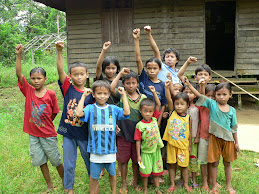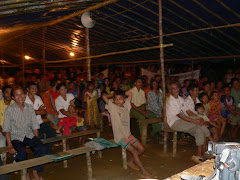Photos by West Kalimantan children bring reconciliation
The
By Erma S. Ranik
Agus is one of thousands of children who fled their homes with their parents following the riot that rocked Sambas in March 1999. He has lived in a haj dormitory in
Agus was able to gratify his longing for his home village when he saw thephotographs on display at an exhibition of children photography at the
Agus' comment was just one of many reactions to the photographs during a workshop on photography held for the children of
Sixty children of Malay, Dayak, Madurese and Chinese ethnic/racial backgrounds took part in the exhibition. Most of them were from socially marginalized classes in
Jonathan Perugia of Child's Eye said the most important part of the program was helping the children of
""Many people may know nothing about what the daily life of a child is like,"" he said.
And sadly, many children lead desperate lives. They receive no education,are subject and witness to horrible violence or are compelled to work to survive.
With just a pocket camera the children were given ample opportunity to make use of photography as an instrument with which they could talk about their daily lives.
""You feel something different when you look at photographs taken by children and those taken by professional photographers,"" said
Professional photographers may come up with artistically fine photographs, but they may not have a strong feeling for what they capture with their cameras. ""They are obviously different from the children in their own environment.""
This explains why the children taking part in the program were able to capture their daily activities in their entirety.
Jemi, 15, a Malay, fishes for a living. So he has chosen as his subject the lives of fishermen's children in Pemangkat, capturing their activities from collecting fish to bathing in the river.
In this exhibition, the children were allowed complete freedom to select which of their photos they thought were worth displaying.
The children of Nyarumkop have also captured the activities they know best. They photographed life in a Dayak village. And Wijayanto, 15, captured with her photos the pulse of life among the ethnic Chinese in Singkawang.
Meanwhile, children from a refugee camp tell in their photos what their lives in the camp are like: a limited supply of clean water, small huts andscabies, which many children in the camp suffer from.
With the special spirit of children, they also recorded in their photos the riot that broke out in
A child is squatting, holding a small banner that reads: ""We love peace/ethnic groups/racial groups/religion."" The caption below the photograph reads as follows: ""This banner is held by a child refugee who loves peace. His name is Adam, aged 10, and he earns a living as a scavenger.""
Look at the photographs by Anissa, 15, a Malay girl from
Anissa said the photo was very important because it depicted the unity between the Madurese and the Malay. Her caption for this photo is: ""Happy and Peaceful.""
""I took this picture in the middle of a riot. The leaders of the Madureseand the Malay suggested that everybody make a banner with the inscription ""Love peace"" to ensure the riot would not spread,"" she said.
Meanwhile, Raidatul Ulum, a coordinator of the event, said the exhibitionalso was held in observance of International Child's Rights Convention Day,which is observed every Nov. 20.
It also is aimed at making more people aware of the plight of children inWest
Therefore, this exhibition was held not only in
To Muhamad, 25, a visitor to the exhibition, this event could be construed as a reconciliation of sorts in
He said that this was a good step forward given that conflicts often occur in the province. ""Hopefully through this exhibition the children willbe able to remind adults of the significance of being different,"" he stressed.
Differences, Muhamad said, are no reason for clashes and conflict.
The writer is a journalist for KALIMANTAN Review and a member of the





Tidak ada komentar:
Posting Komentar